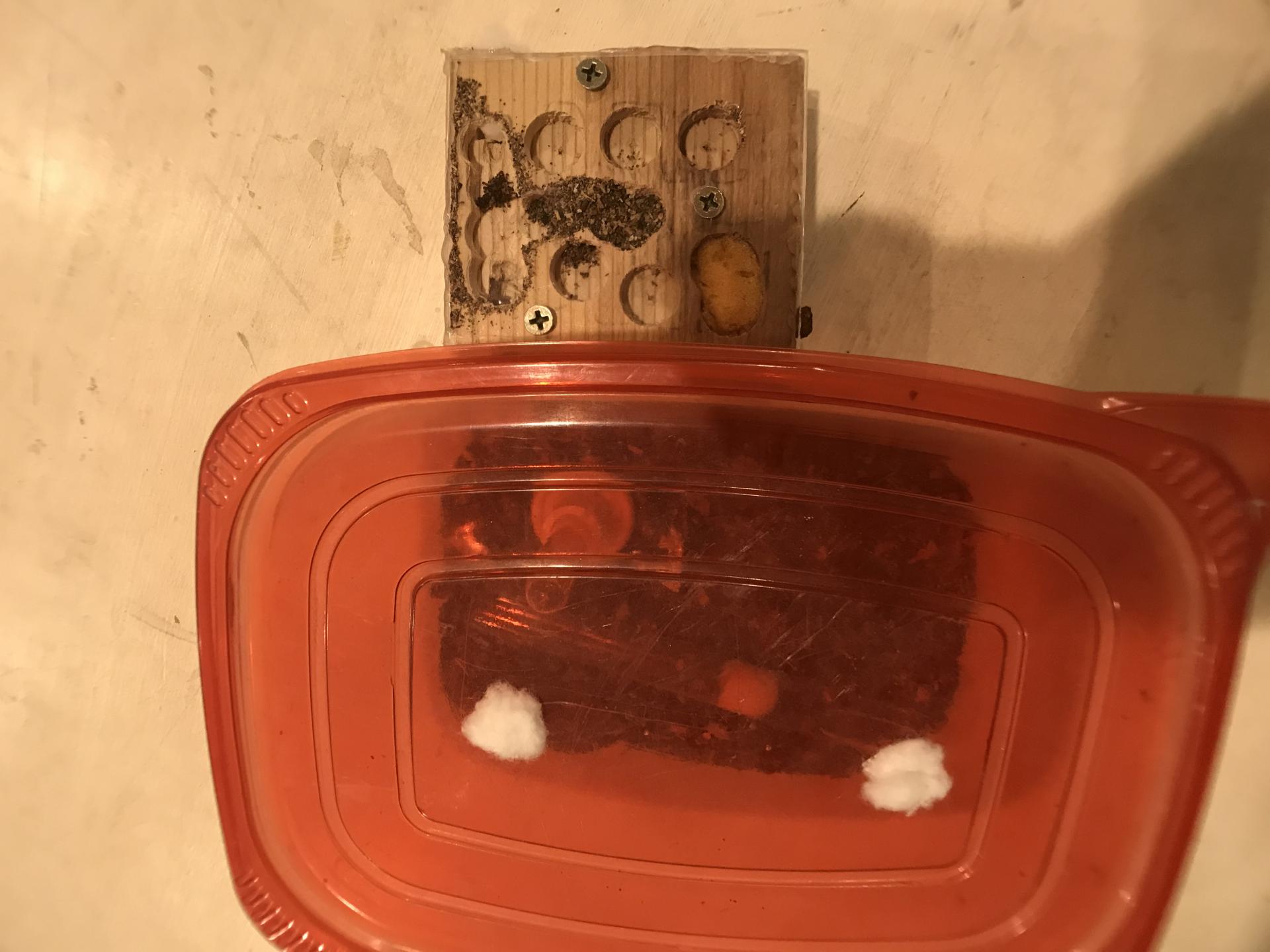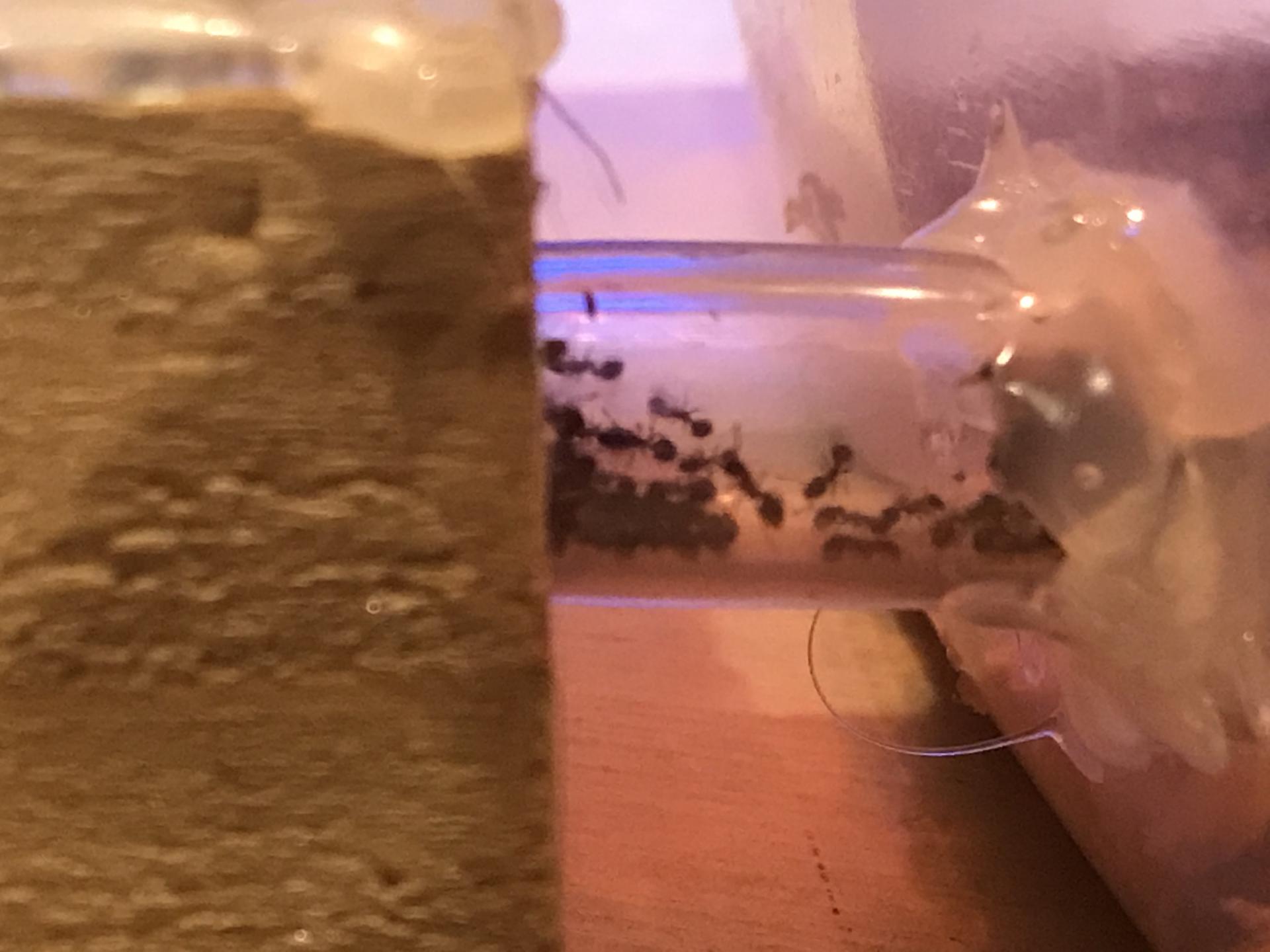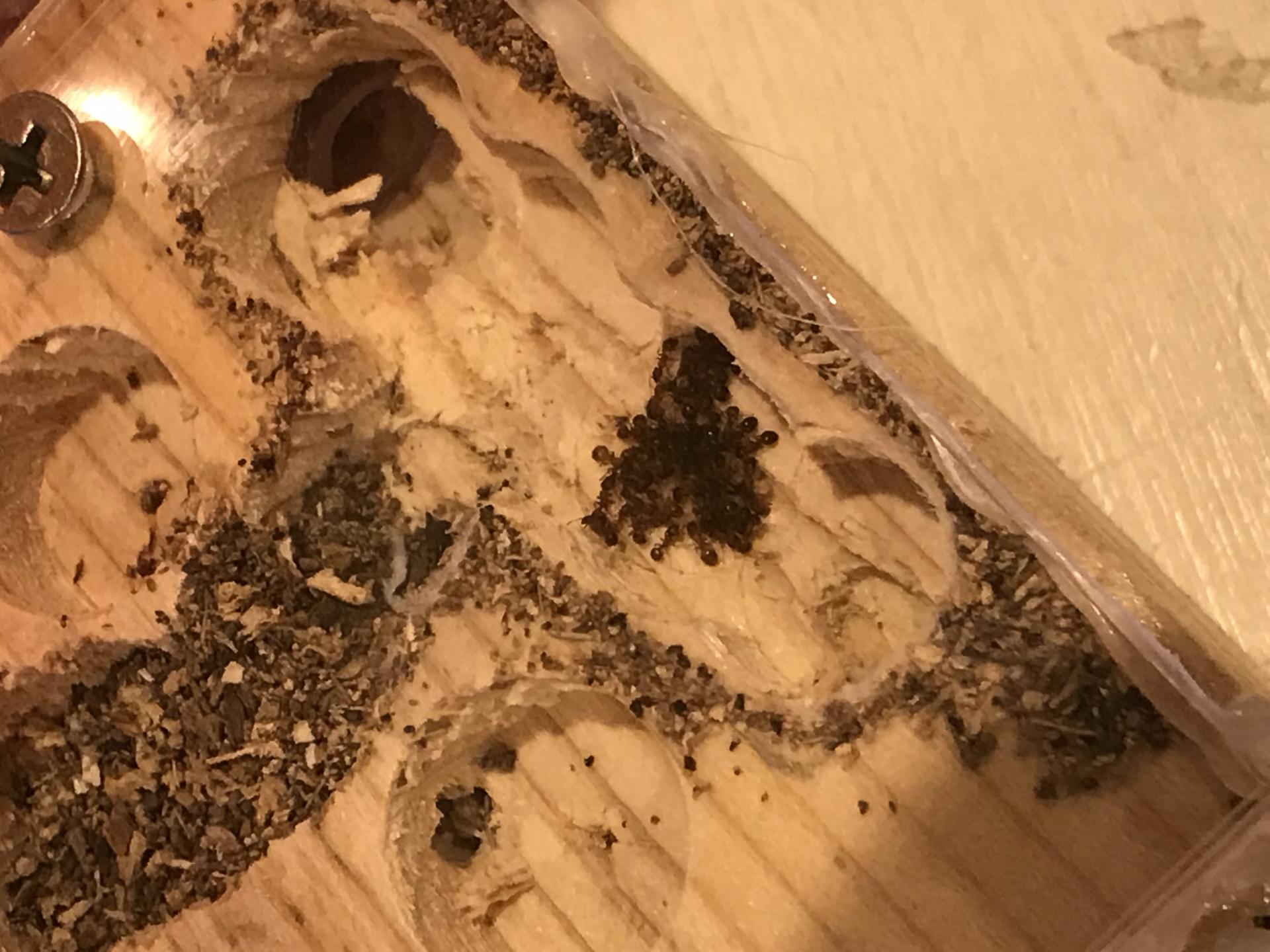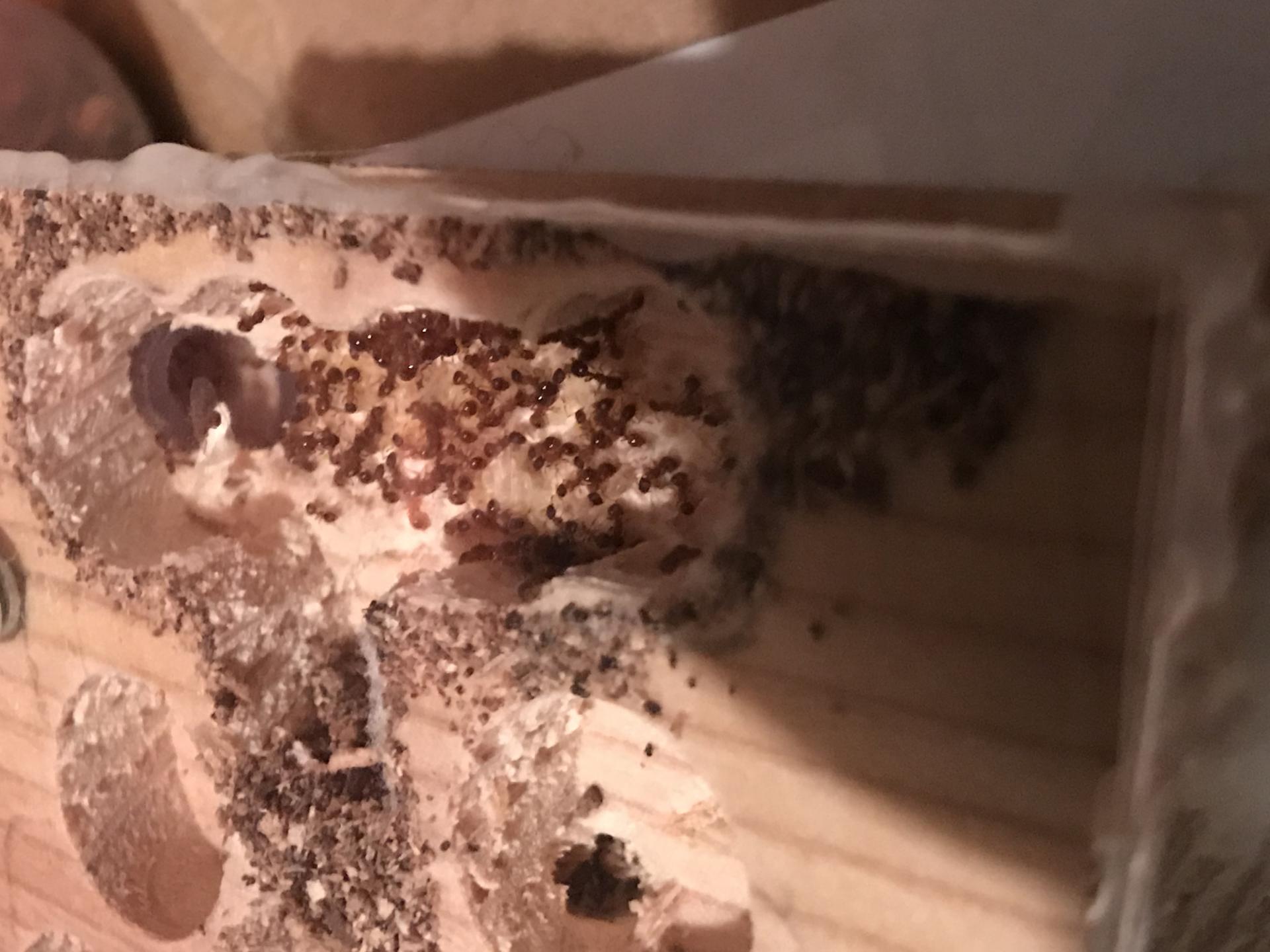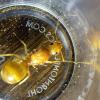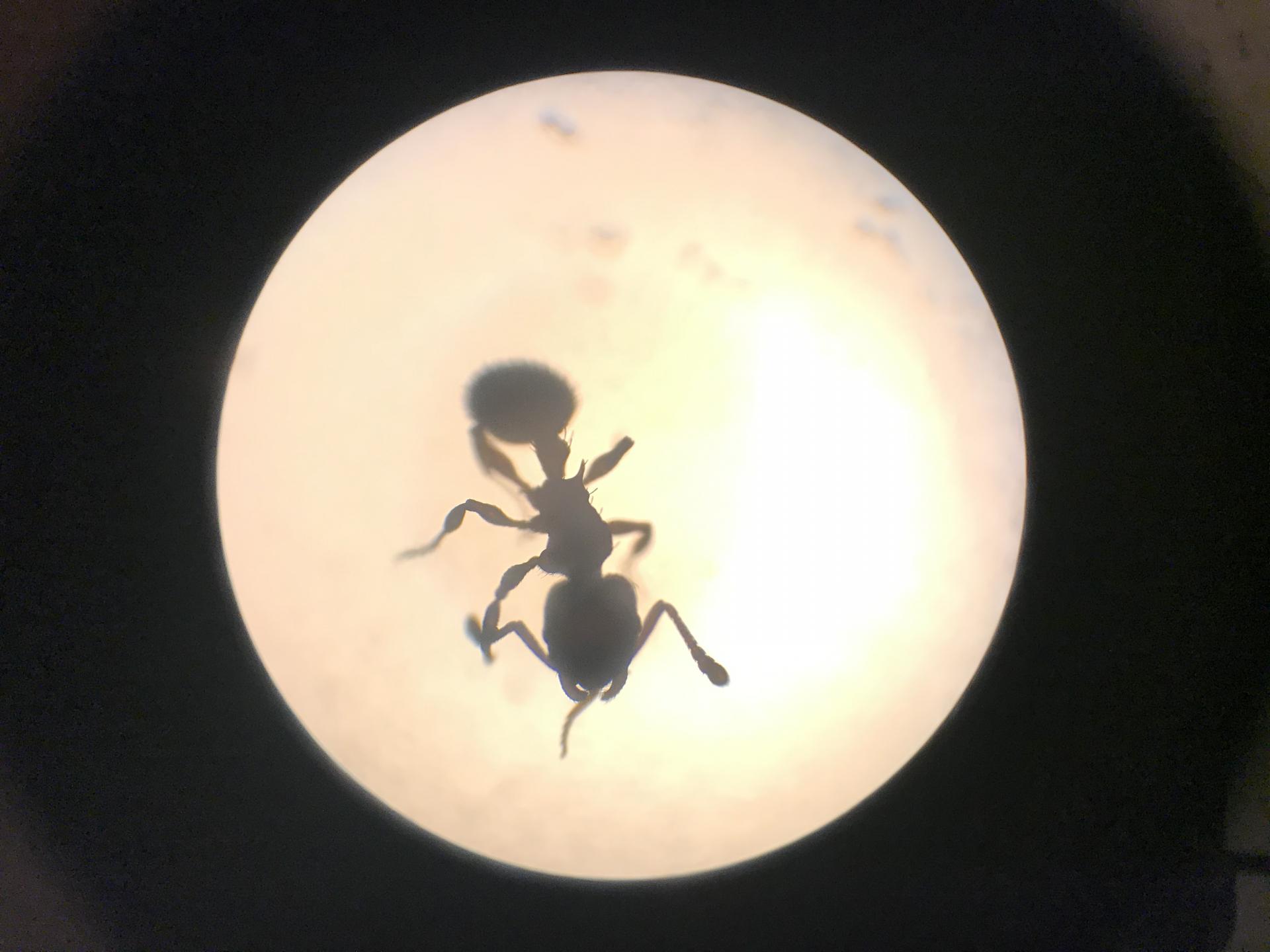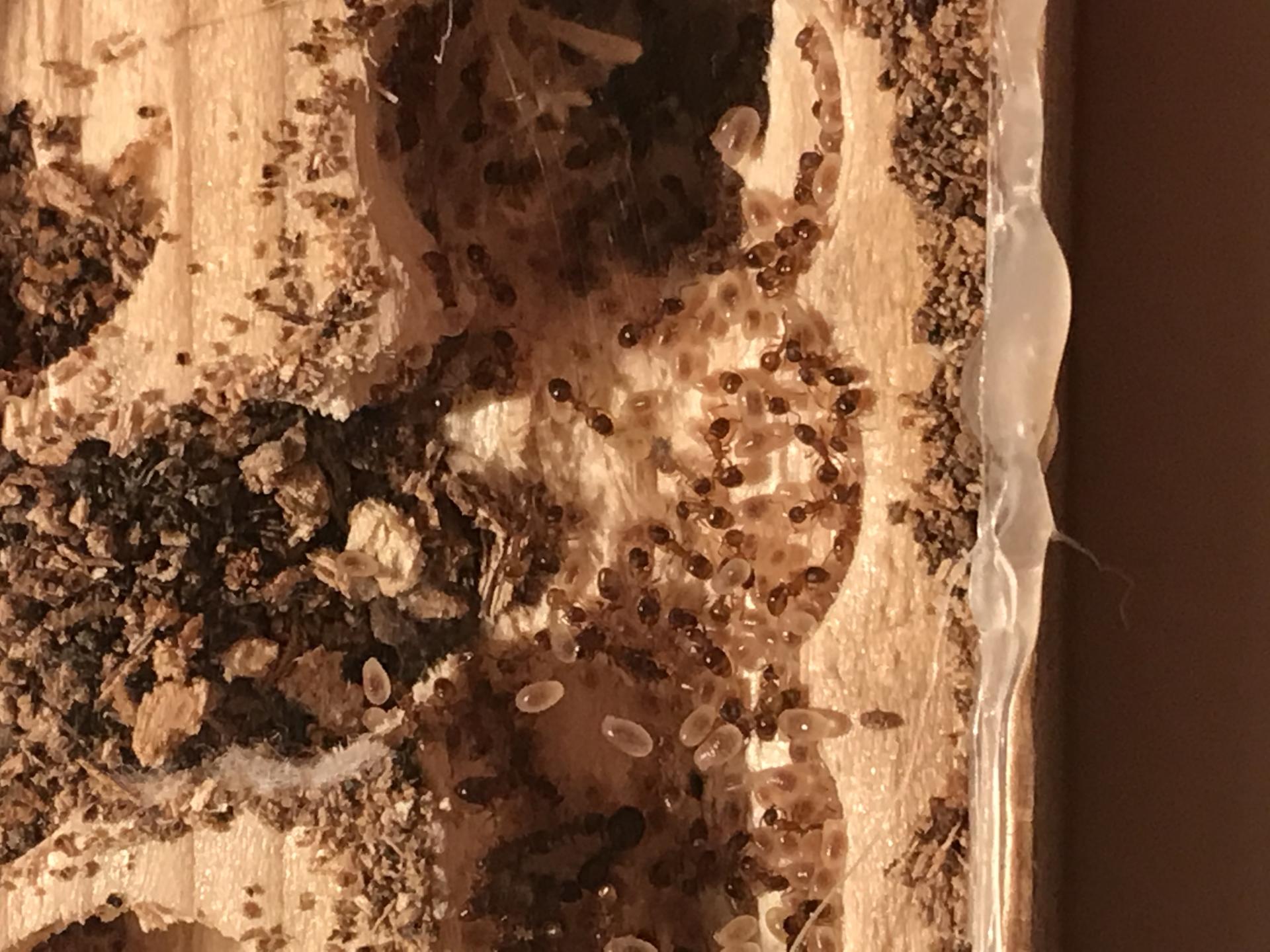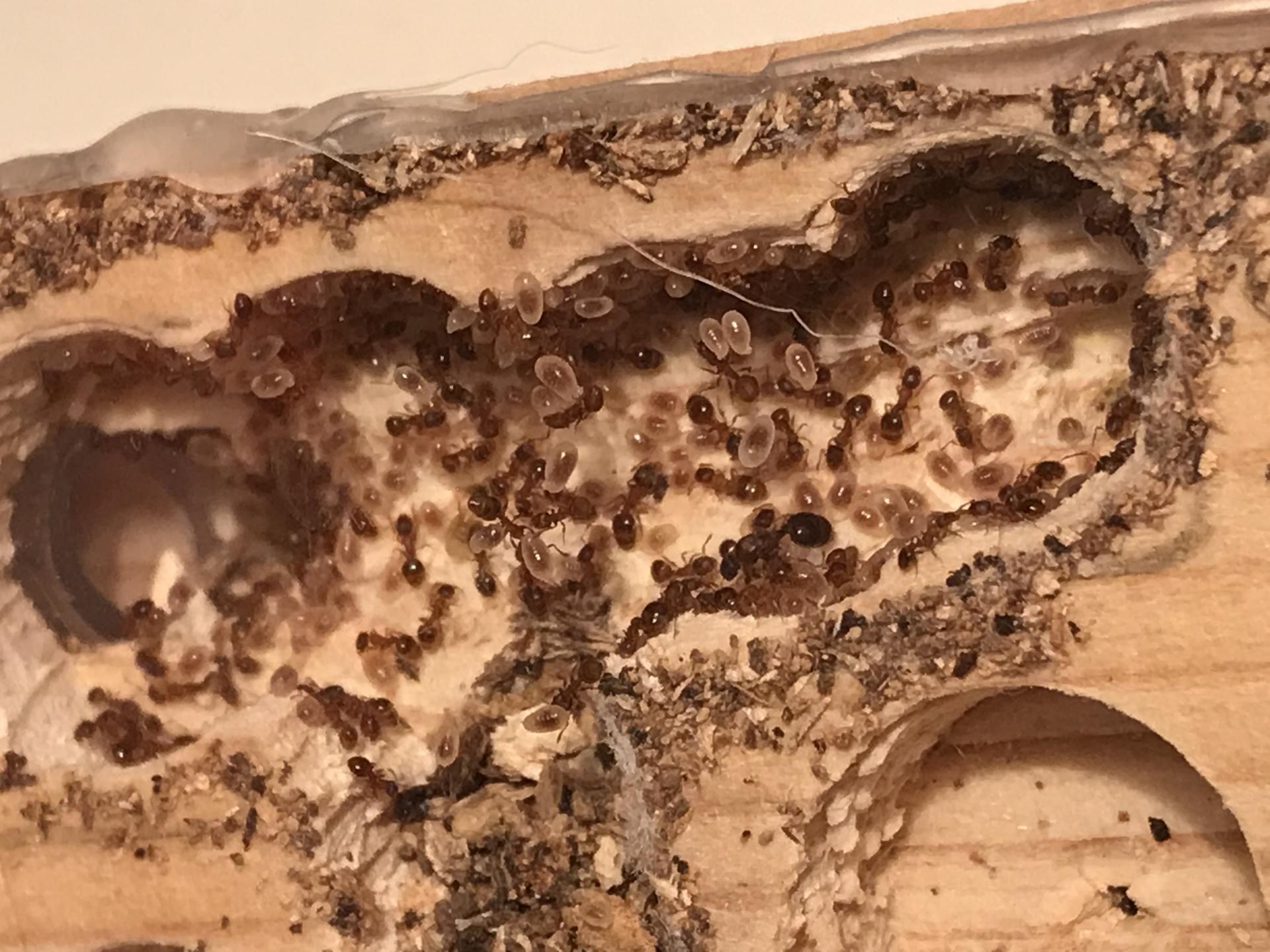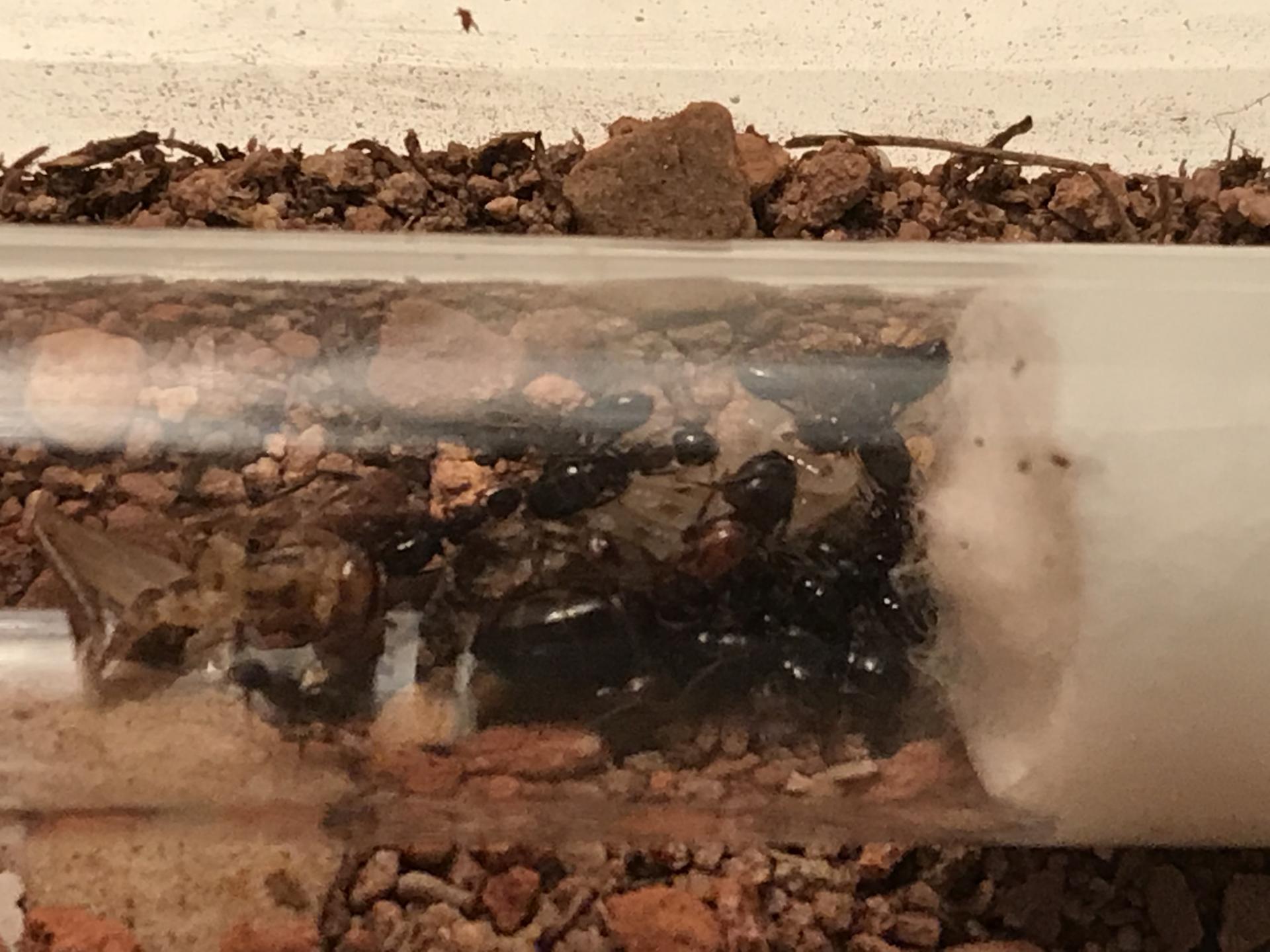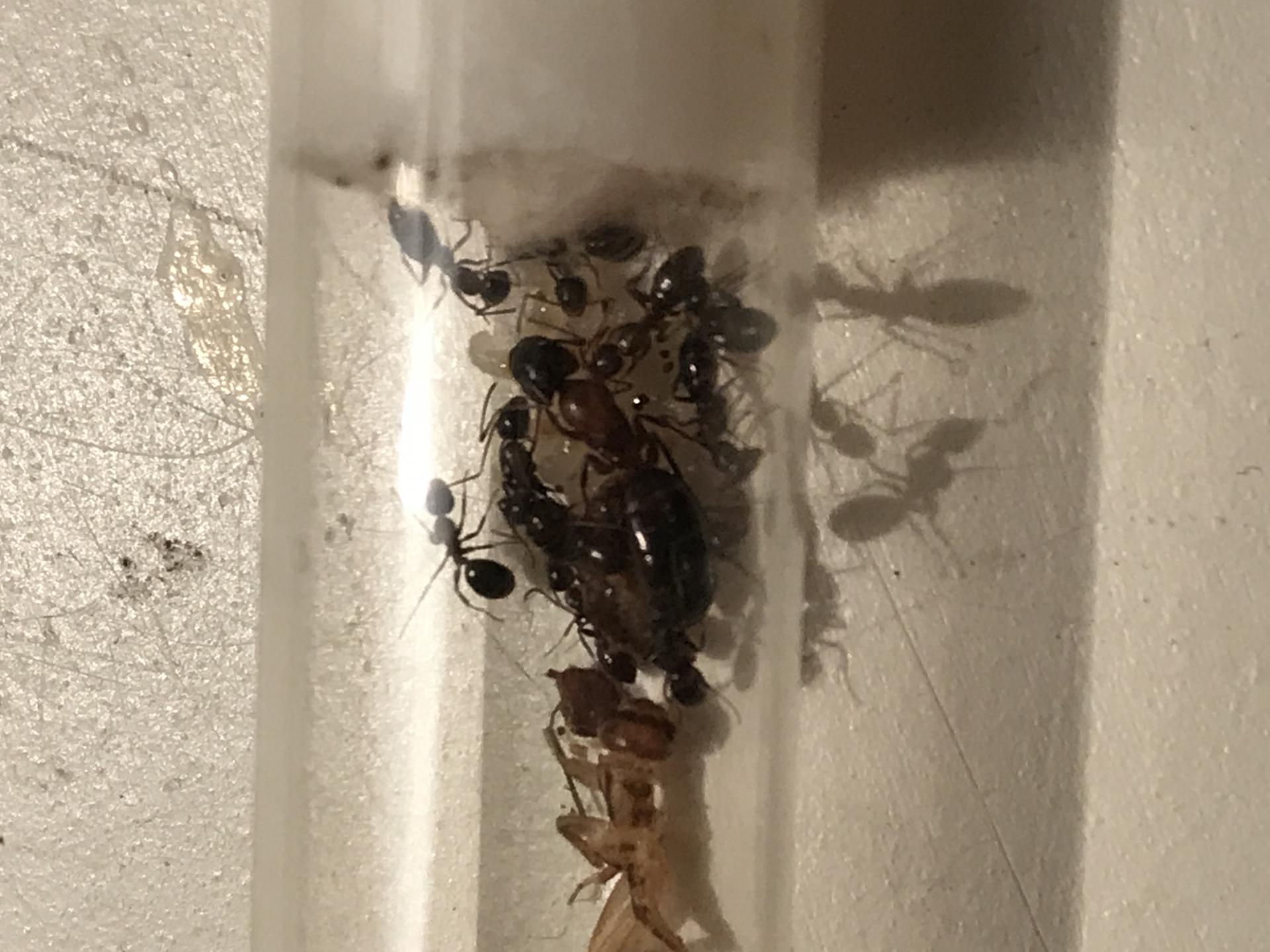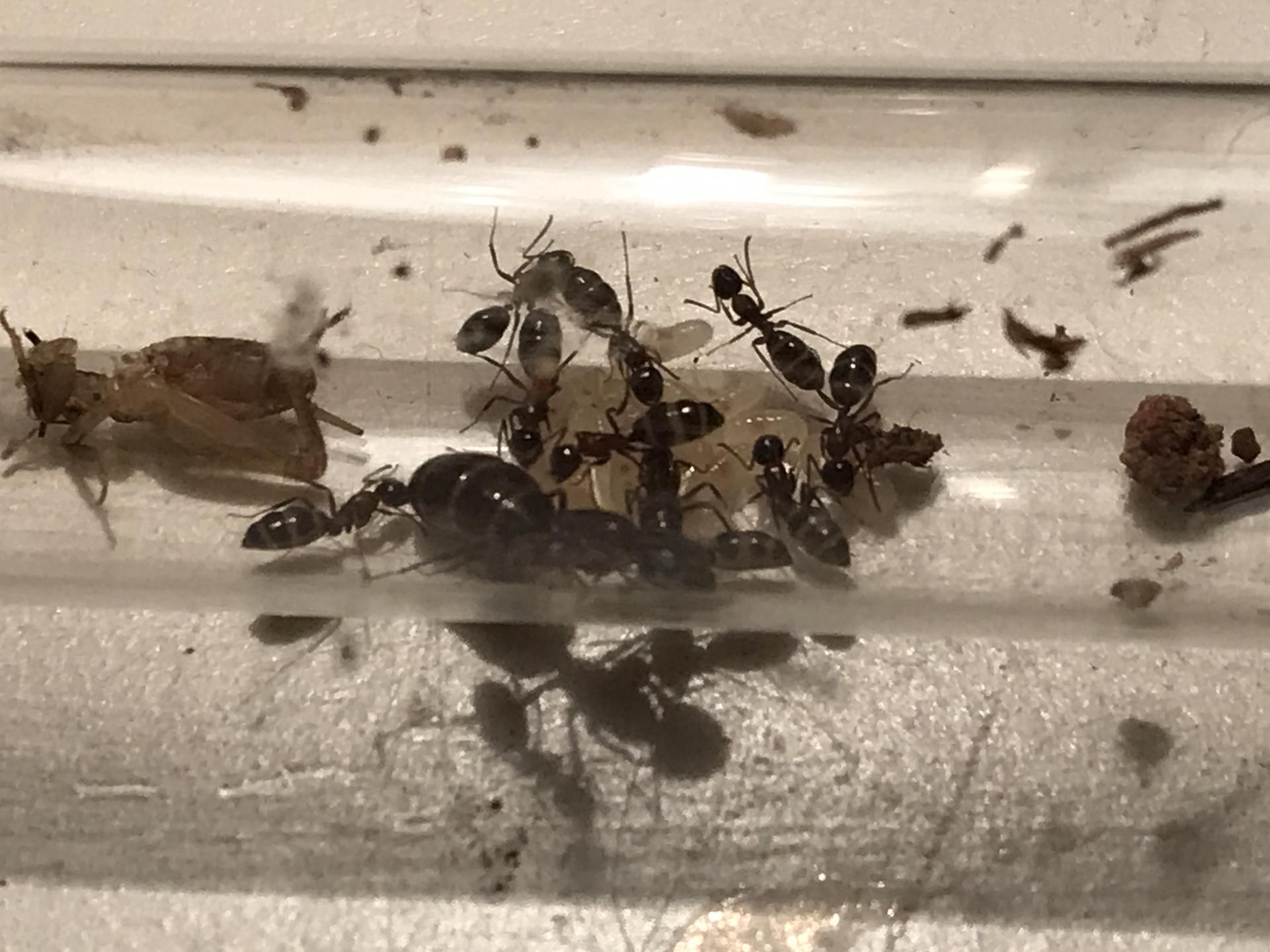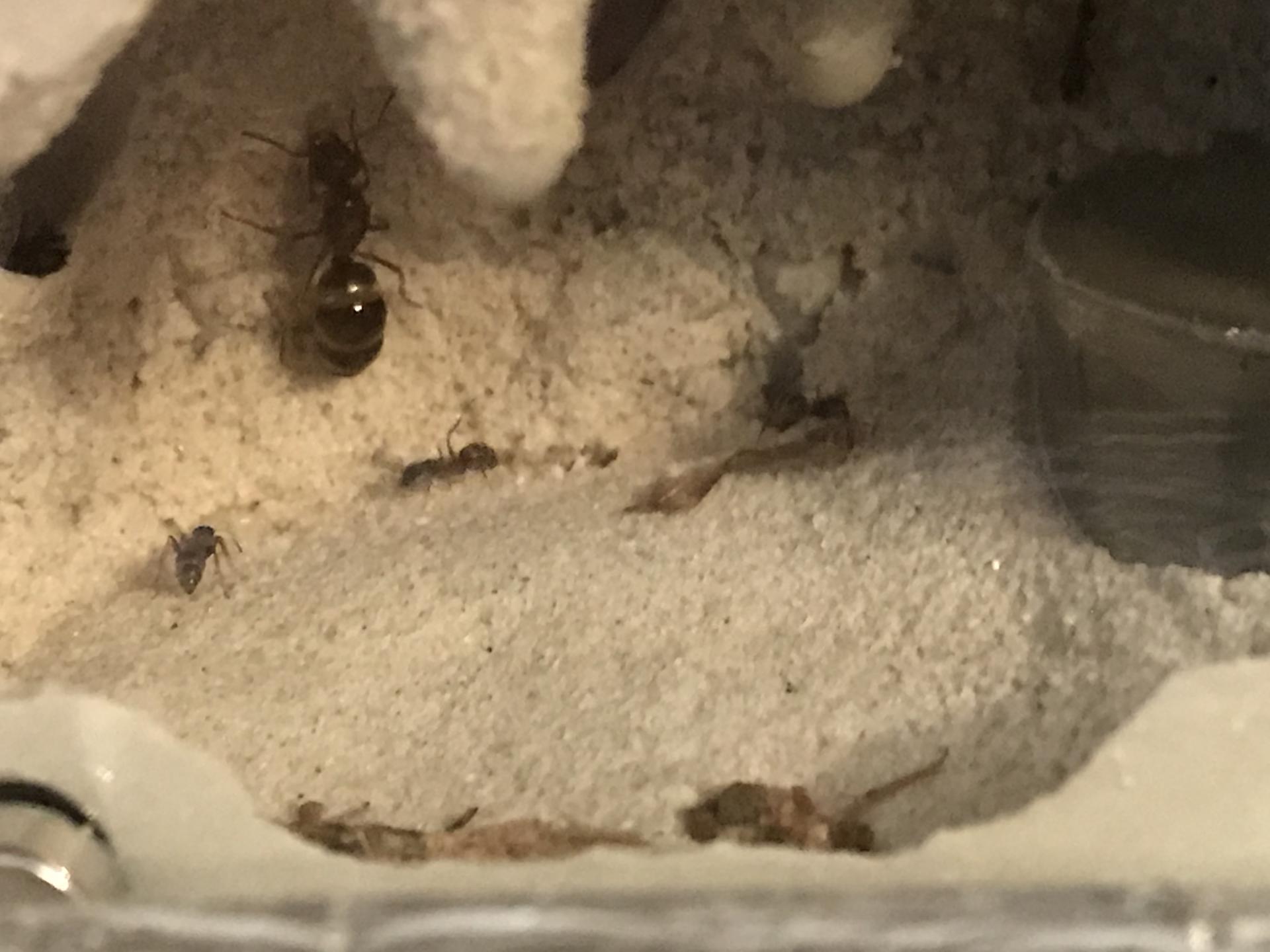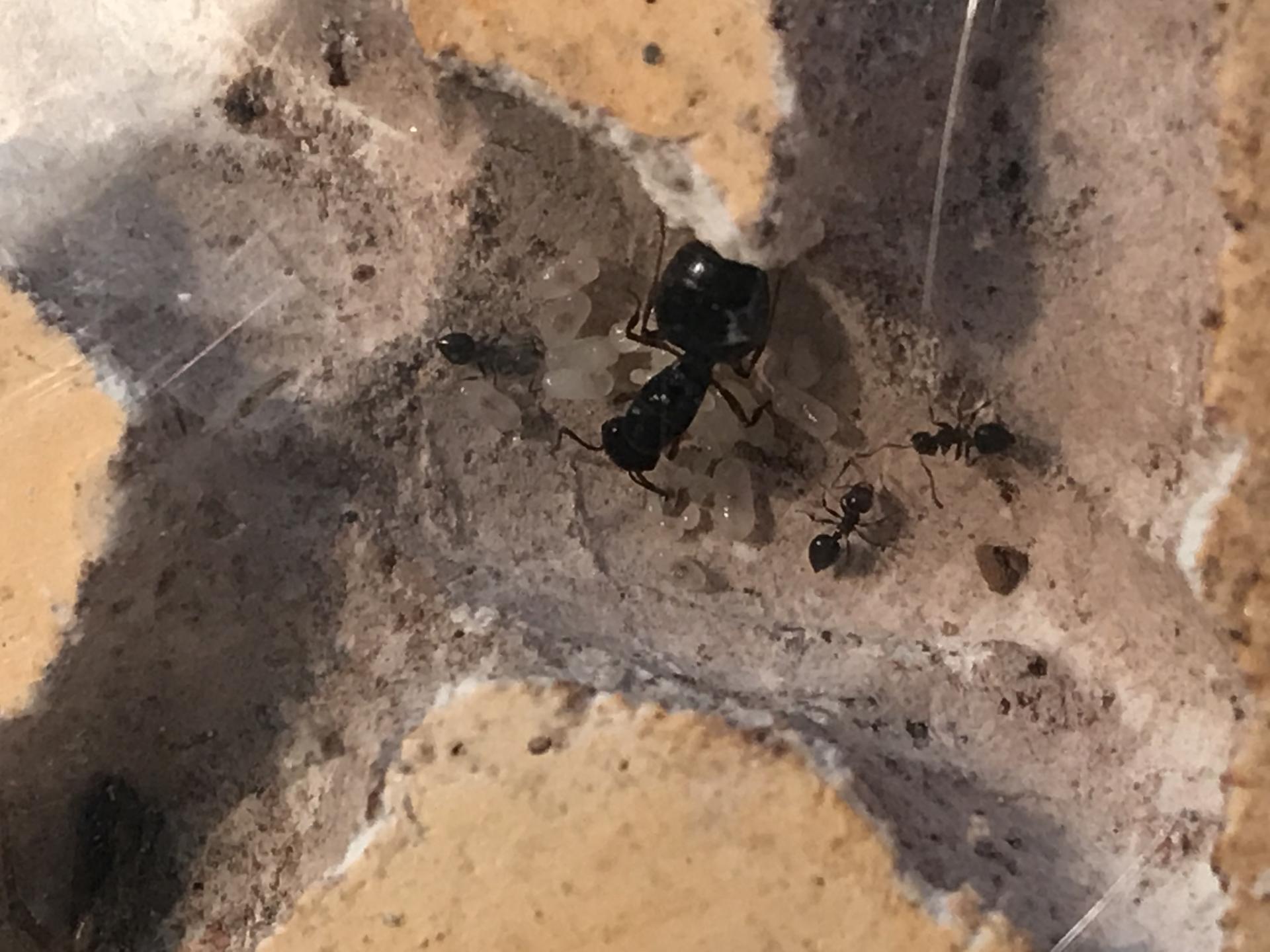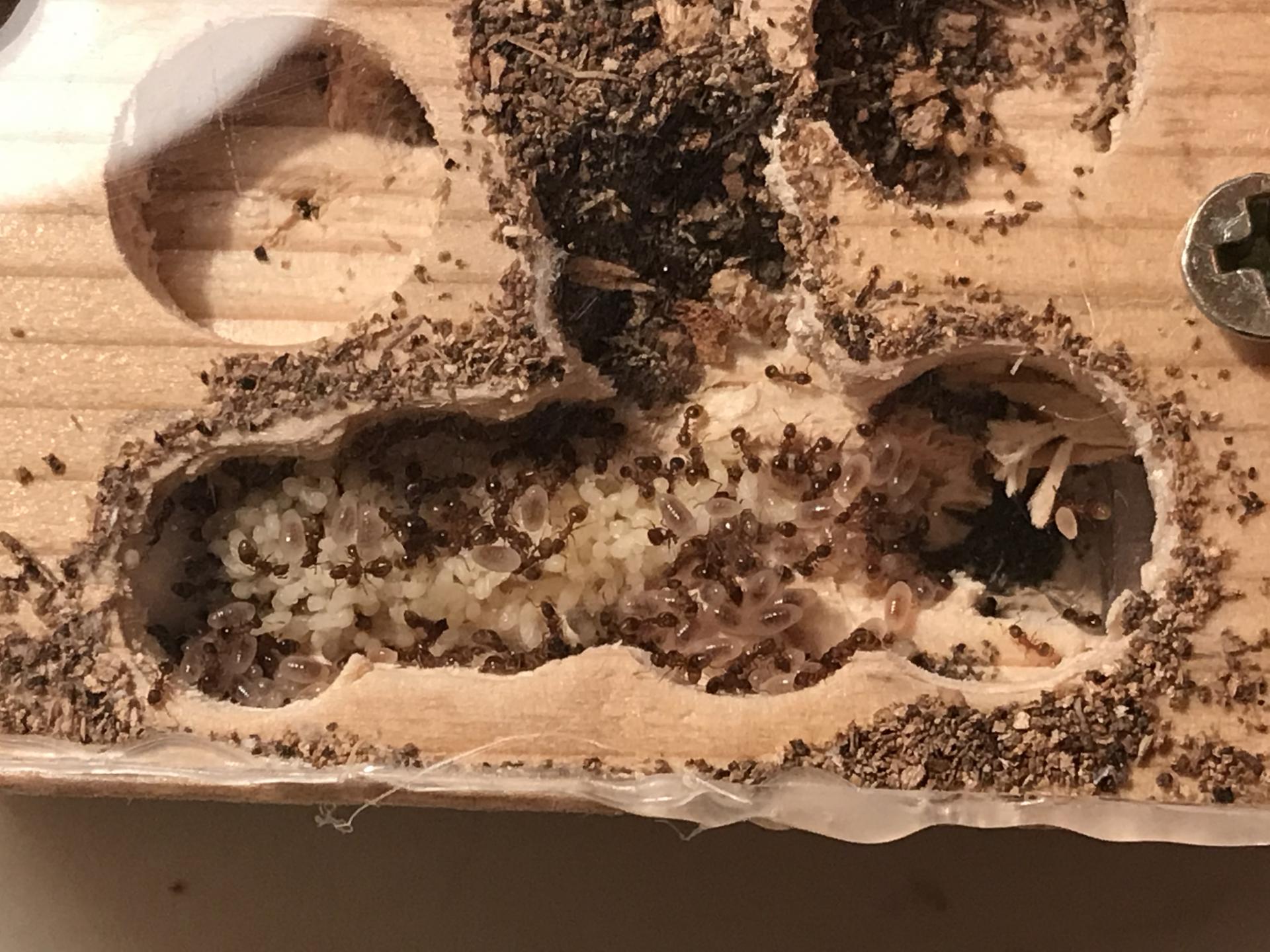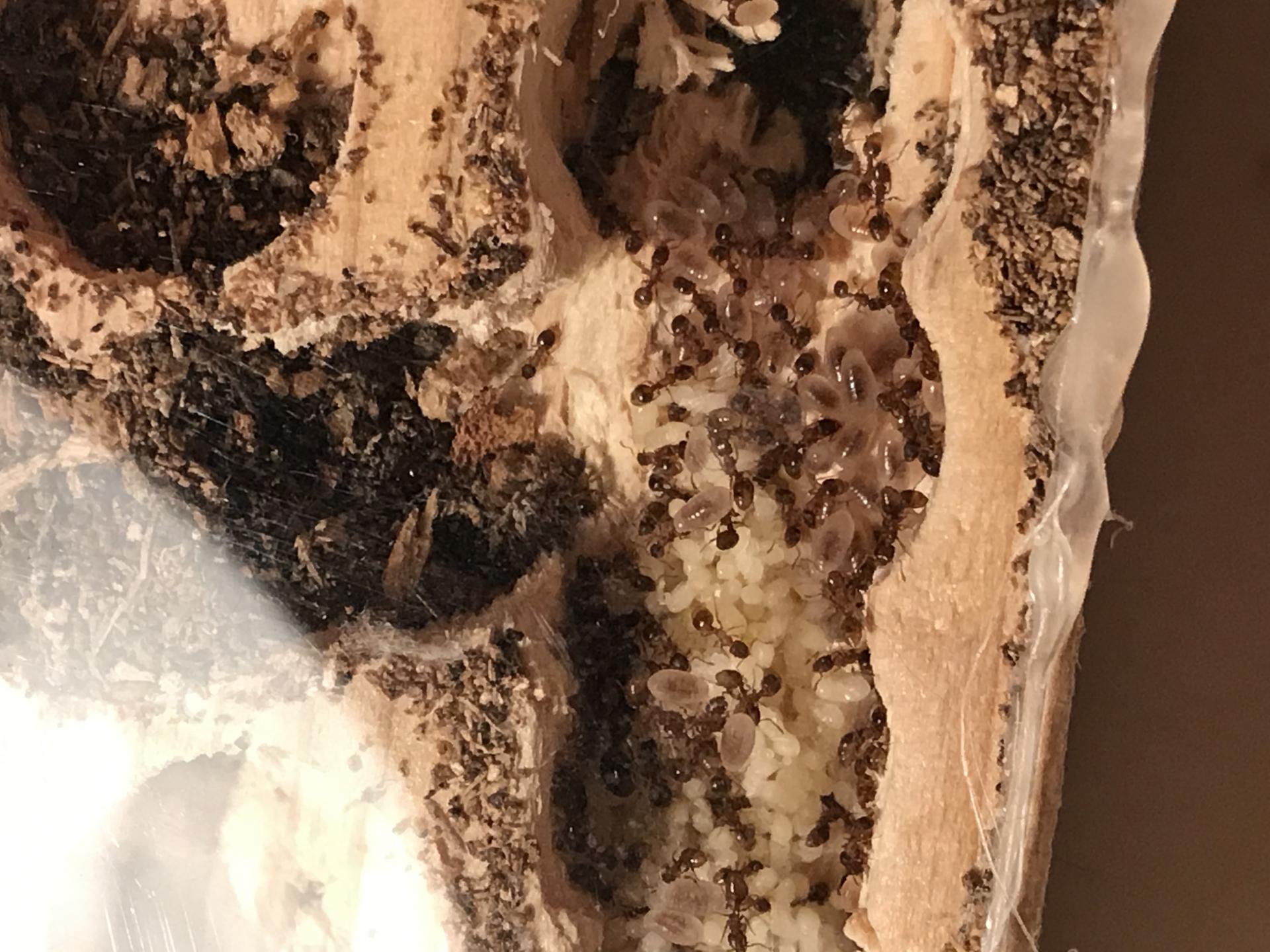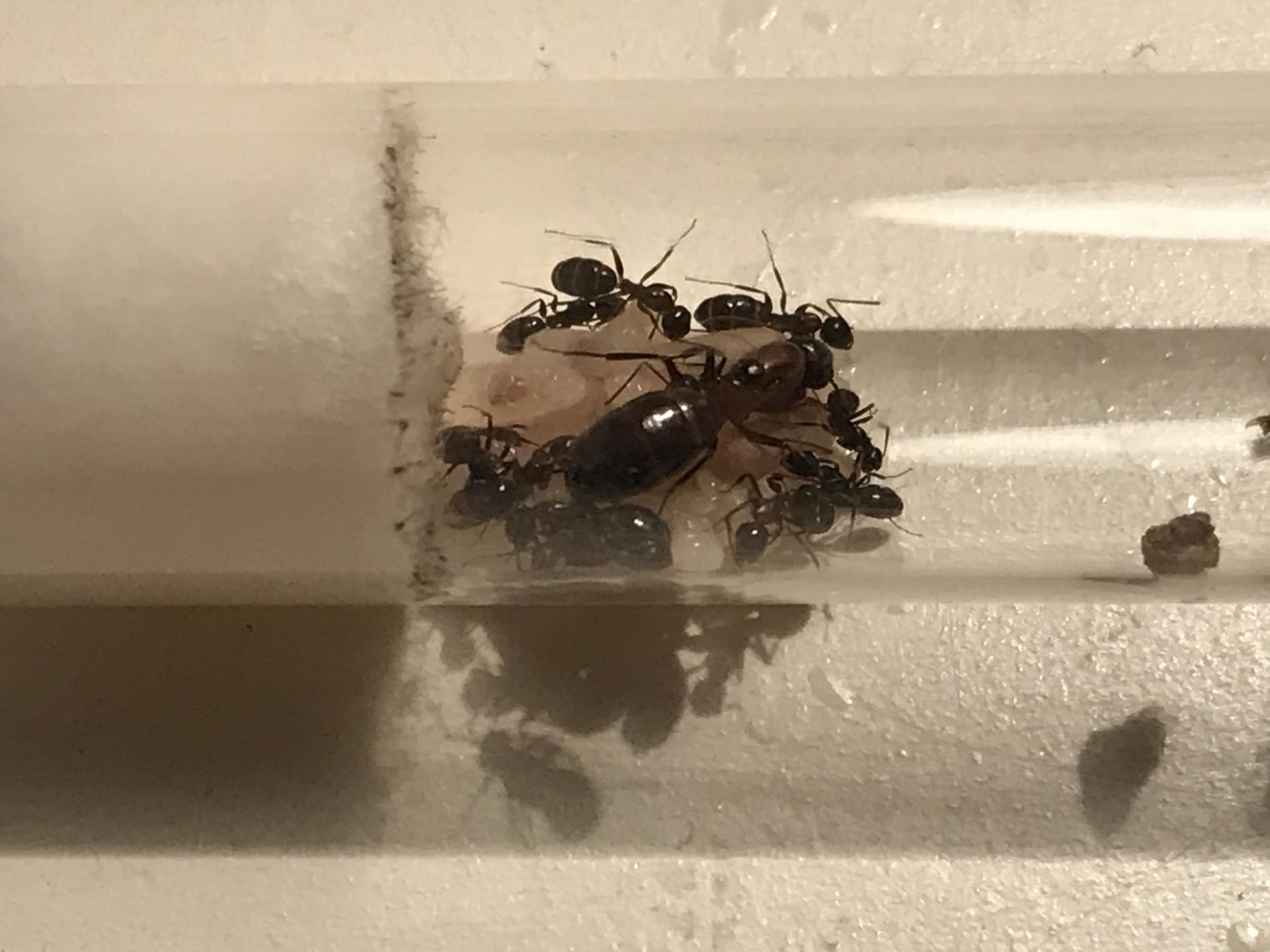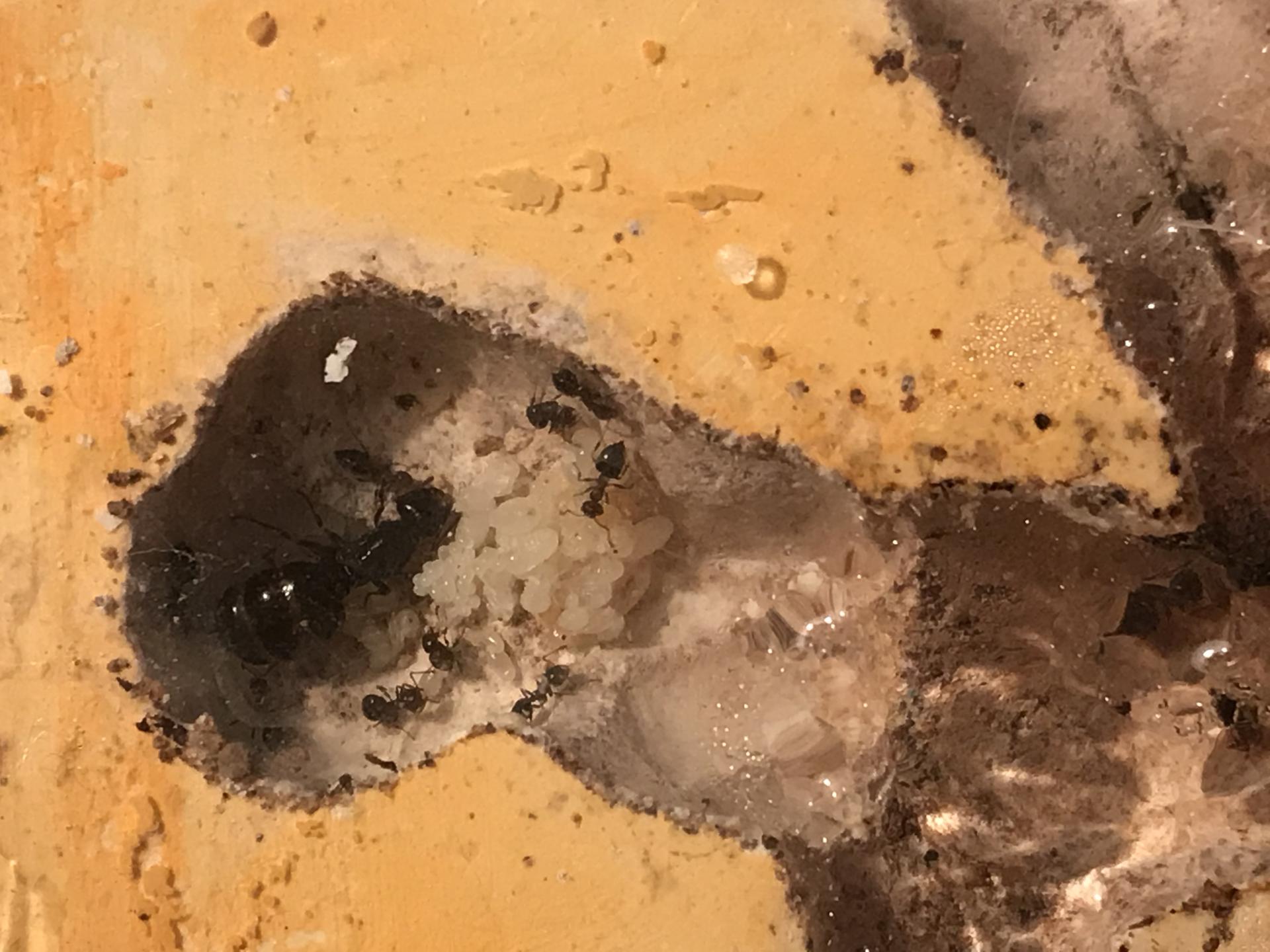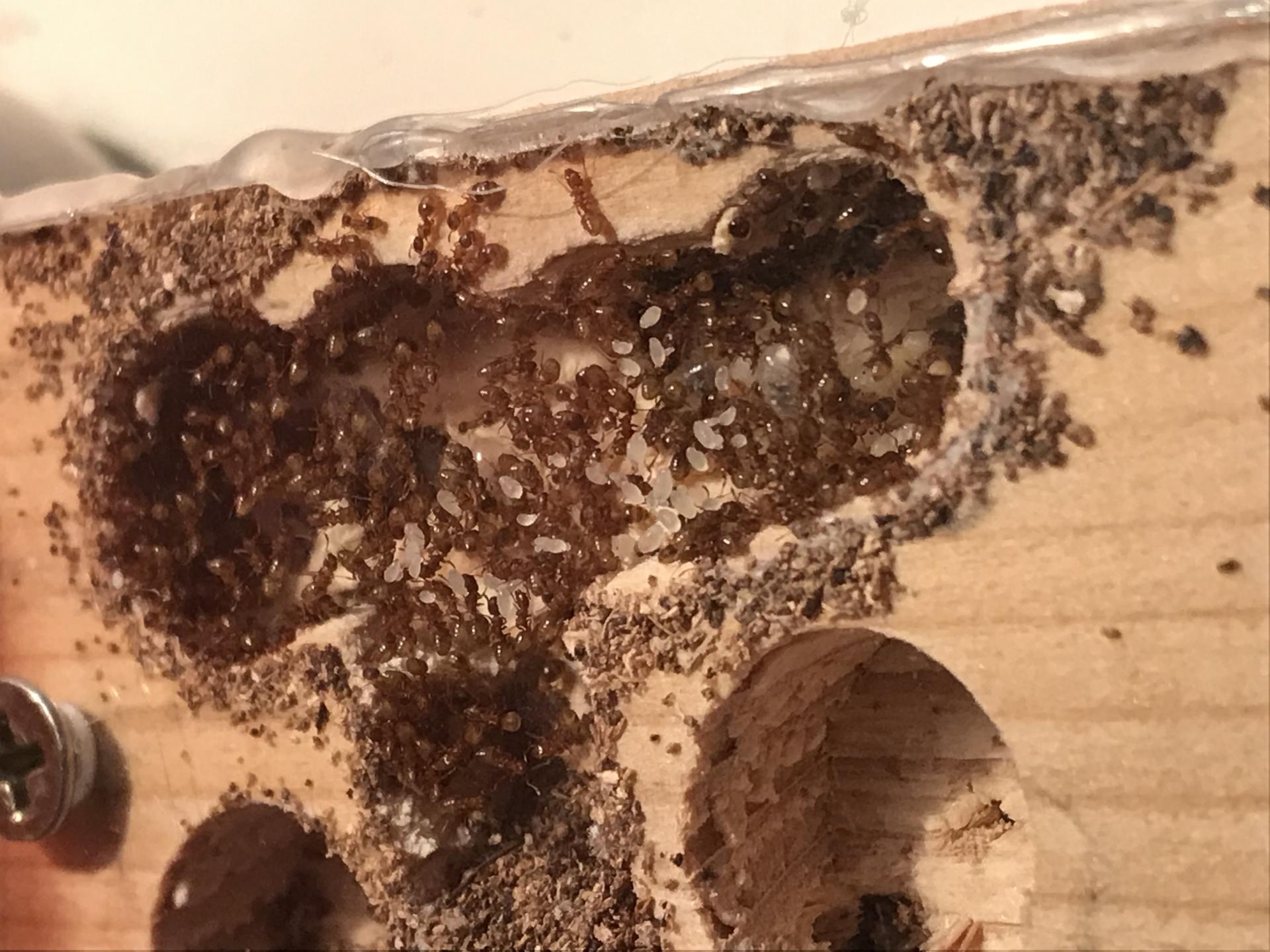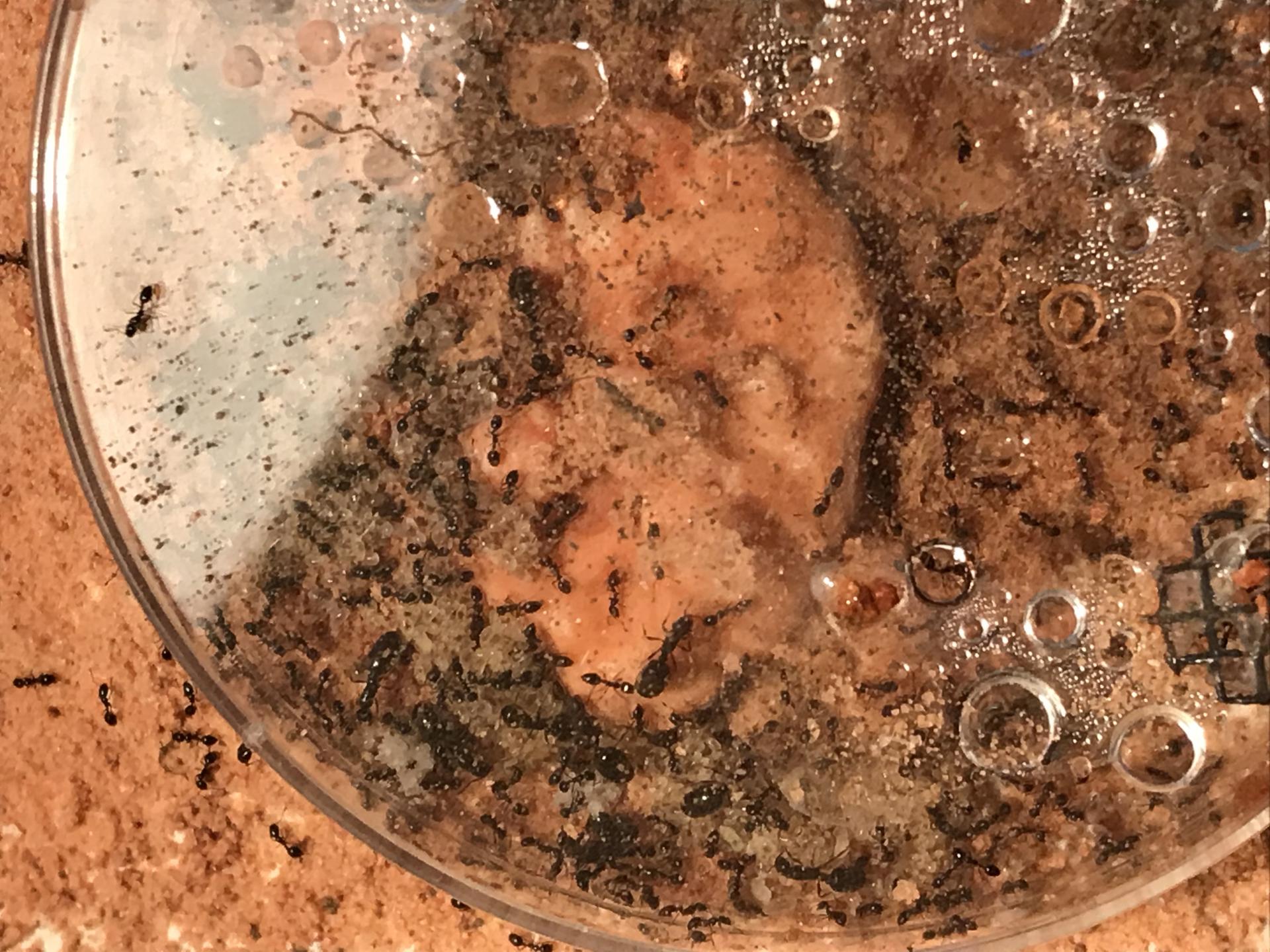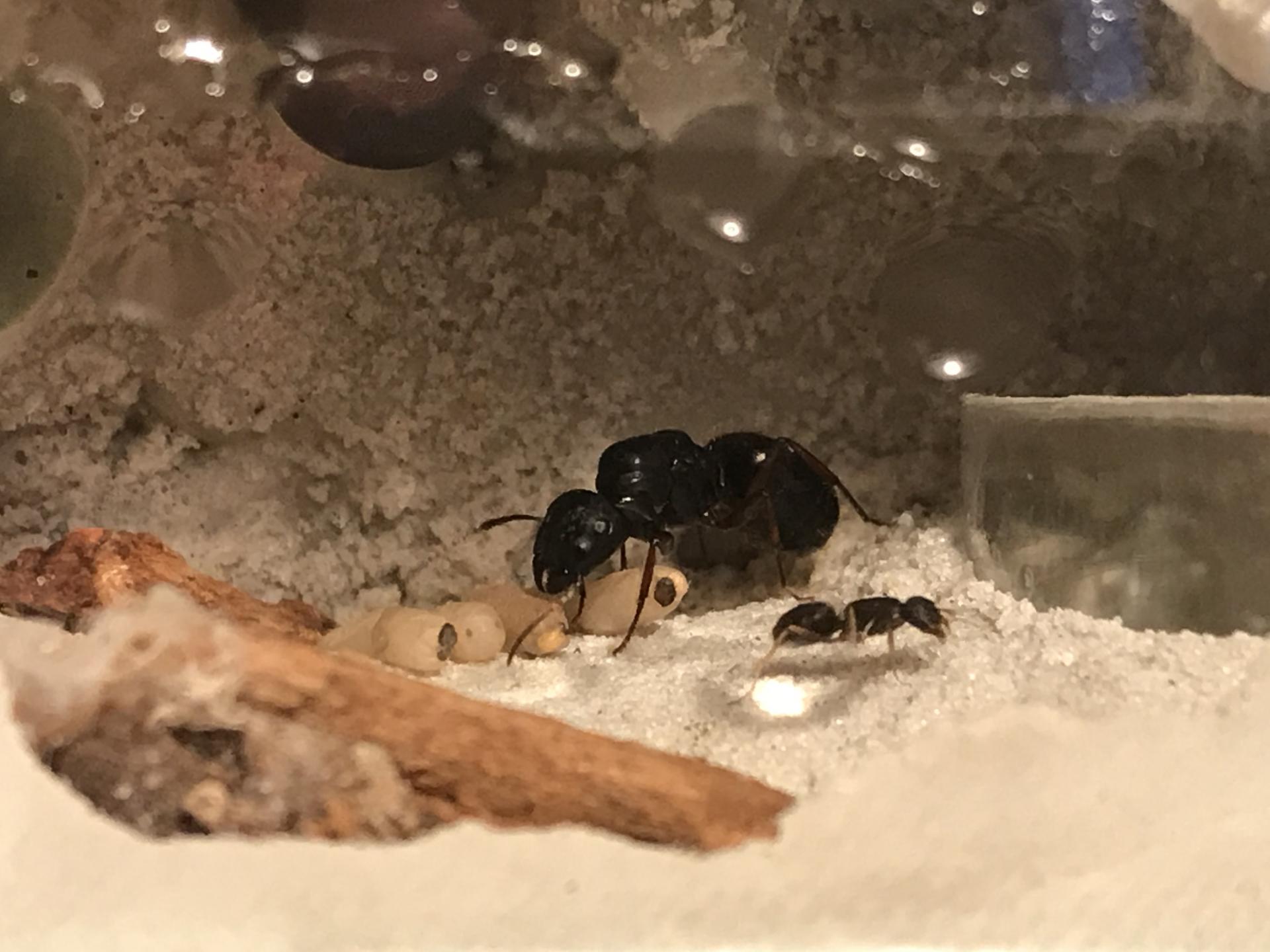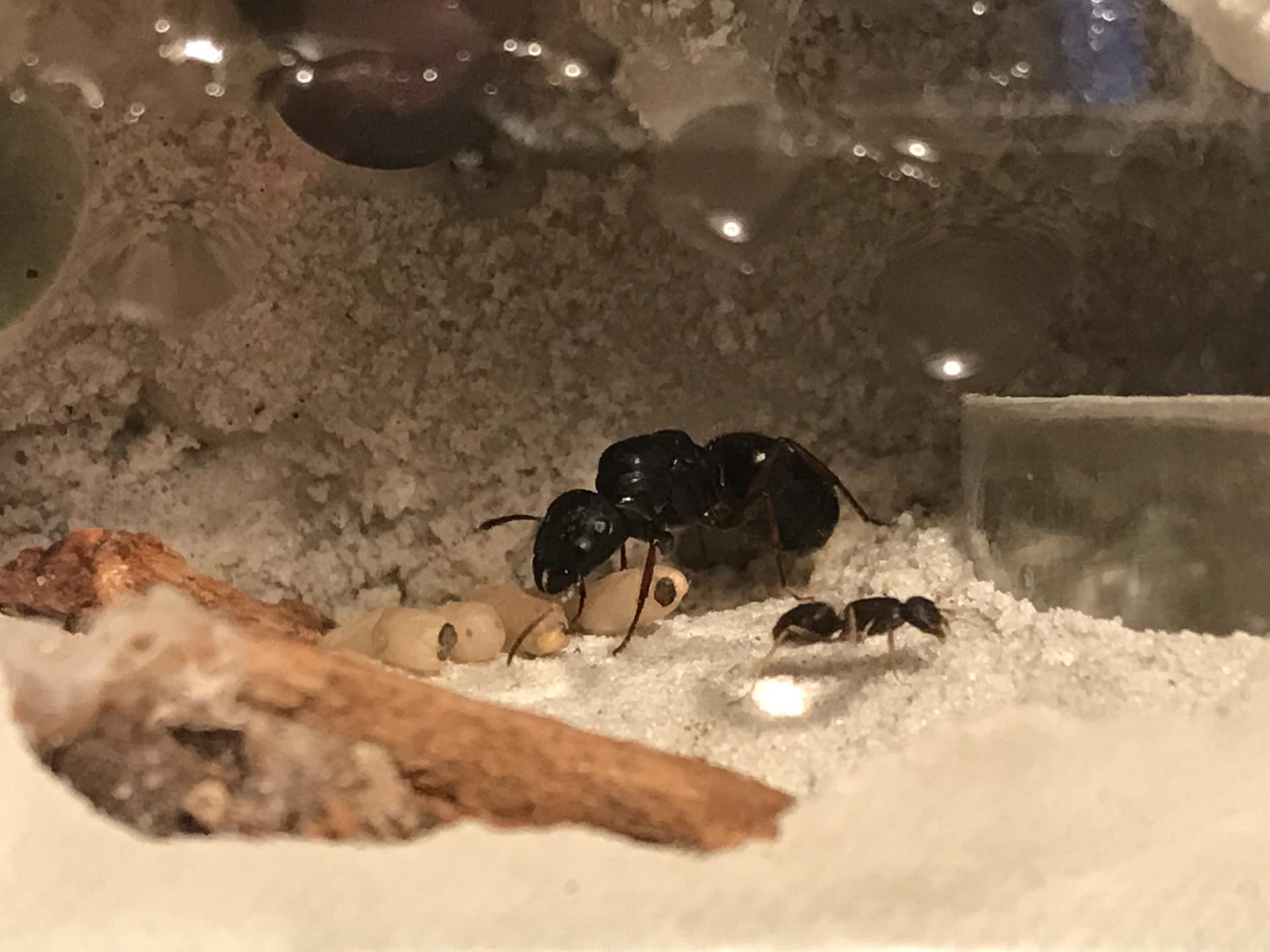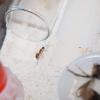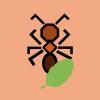Utah Ants' Ant Keeping Journal
-Discontinued as of 7/12/23-
Colonies being featured as of 4/21/2023:
See offshoot journals for continued Cematogaster, Camponotus, Pogonomyrmex and Formica entries.
- Myrmecocystus mexicanus
I'm going to make a journal for all my colonies and a few queens, I'll start off with one of my largest:
I captured this colony about a year ago in a dead log. They had 13 workers and lots of larvae, the eggs and pupae eluded me unfortunately. This colony may have had multiple queens or been polydomous even with it's small numbers. The last time I checked the spot I captured them, workers were still foraging. I know its not common for multi-queen Temnothorax colony's to occur in the wild but those foragers and the missing pupea/eggs (where the queen usually resides), deep under ground made me suspicious. Since capture they had about 50 larvae they had a population boom this last summer and have a large number of small larvae for next year. These ants grow very slowly (1.5 months) and they love any heat applied to them. I'm going to try heating them regularly in the summer. This colony also has pretty good eyesight and they are comparatively large to other temnothorax species. They eat mainly grubs such as mealworms among other things. Its fascinating to watch them eat because they bore small holes into the exoskeleton of the grub and hollow it out with multiple workers working at once inside it.
Right now this colony is in hibernation and I plan to keep them this way for at least 2 months. I will update when I take them out and feed them.
*This was the first wood formicarium I'd ever made and I made it in a hurry so that's why it looks like a piece of trash, at least they seem to like it...
Edited by UtahAnts, July 14 2024 - 3:02 PM.




